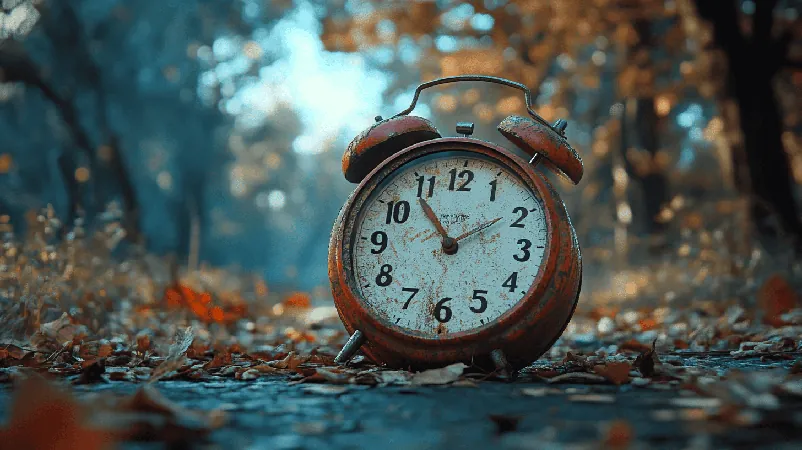
Breakthrough Study Uncovers Light-Based Remedy for Daylight Saving Time Woes!
2024-10-26
Author: Sarah
Introduction
As the controversial practice of Daylight Saving Time (DST) continues to spark debates, a groundbreaking new study sheds light on innovative strategies that could ease the chaos inflicted on our internal clocks.
Researchers Mengzhu Xu, Charikleia Papatsimpa, Luc Schlangen, and Jean-Paul Linnartz have identified how targeted exposure to both natural and artificial light can help us adapt more swiftly to the shifts caused by DST.
Their findings, published in the journal Scientific Reports, suggest that a carefully crafted light exposure plan can mitigate the health and productivity hurdles many face during the annual clock changes.
Challenges of Daylight Saving Time
The challenges posed by the biannual transitions into and out of DST affect countless individuals globally, often leading to significant disruptions in circadian rhythms.
Traditionally, DST was introduced to make better use of daylight in the evenings, theoretically saving energy and aligning daily activities with available sunlight.
However, the impact of shifting the clock by just one hour can wreak havoc on sleep patterns, particularly for 'night owls,' who naturally prefer a later schedule.
Research Findings
Using advanced mathematical modeling techniques, the study reveals how timing and intensity of light exposure are pivotal in resetting our biological clocks.
The researchers discovered that increased morning brightness or strategically dimming lights in the evening can play a crucial role in helping individuals adjust to the new time.
Notably, people who are more resistant to change—like late-night individuals—may require even more tailored light exposure to normalize their schedules.
Practical Recommendations
The team emphasizes practical steps individuals can take: for the transition into longer daylight in spring, morning activities like walking outside or using bright indoor lighting could significantly accelerate adaptation.
Conversely, in the fall, engaging in outdoor activities during early evenings or reducing indoor lighting after sunset may help.
Health Implications
Moreover, the study points out alarming correlations between the springtime shift and increased health risks.
Experts have noted a rise in traffic accidents, heart attacks, and dips in workplace productivity following the clock change.
With these findings reinforcing the notion that aligning with our light-dark cycles is vital for our health, the study supports the need for personalized approaches to light exposure.
Future Perspectives
As the debate over the necessity of DST continues, the implications of this research transcend mere inconvenience.
It opens the door to potentially designing customized light exposure protocols based on individual chronotypes.
The authors suggest a future where scientifically-backed light strategies could seamlessly guide us through the biannual clock shifts, promising a healthier and more harmonious existence for everyone.
Conclusion
Could this mean a revolution in how we approach Daylight Saving Time? Only time—and light—will tell!




 Brasil (PT)
Brasil (PT)
 Canada (EN)
Canada (EN)
 Chile (ES)
Chile (ES)
 España (ES)
España (ES)
 France (FR)
France (FR)
 Hong Kong (EN)
Hong Kong (EN)
 Italia (IT)
Italia (IT)
 日本 (JA)
日本 (JA)
 Magyarország (HU)
Magyarország (HU)
 Norge (NO)
Norge (NO)
 Polska (PL)
Polska (PL)
 Schweiz (DE)
Schweiz (DE)
 Singapore (EN)
Singapore (EN)
 Sverige (SV)
Sverige (SV)
 Suomi (FI)
Suomi (FI)
 Türkiye (TR)
Türkiye (TR)